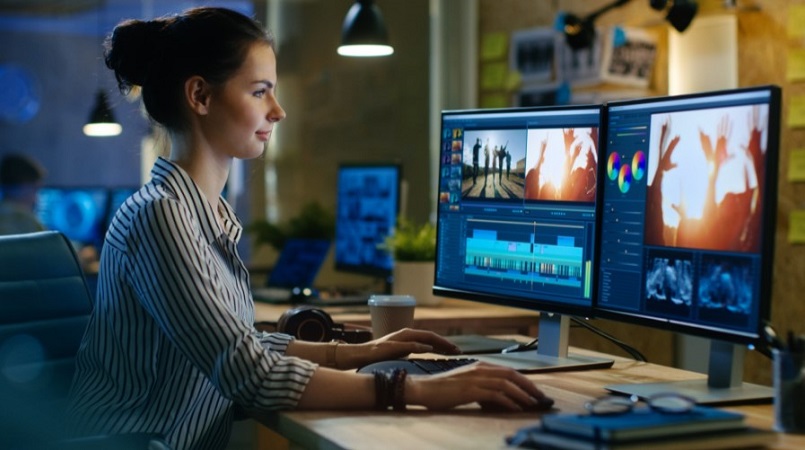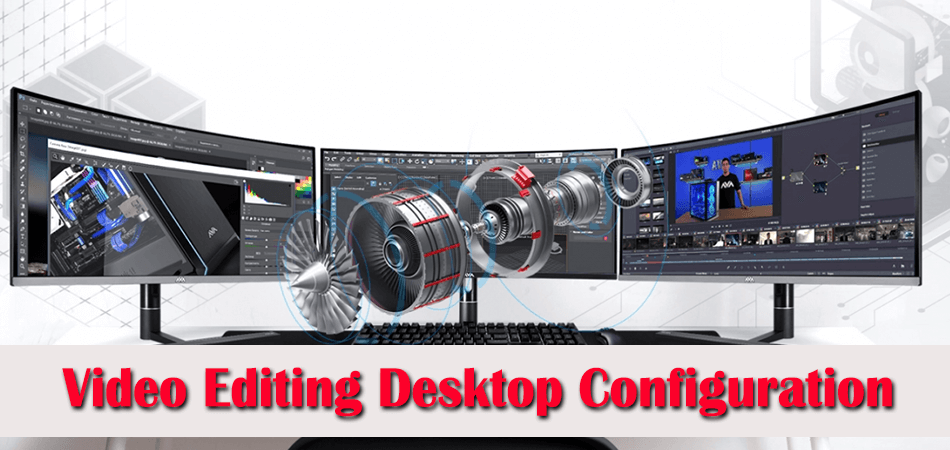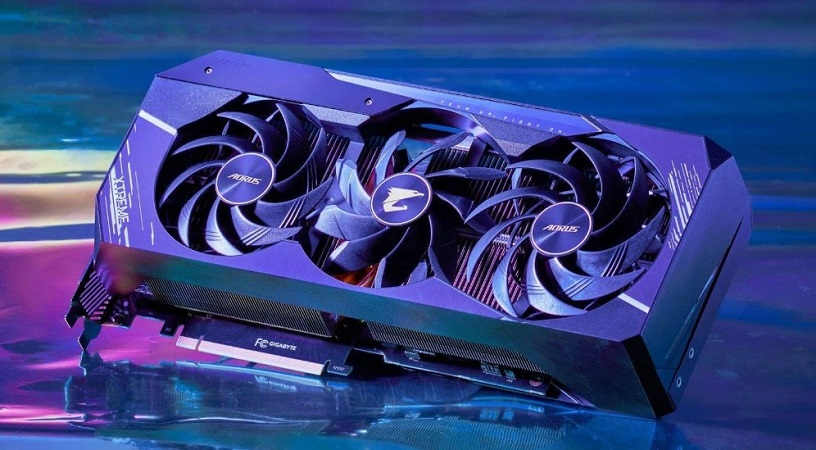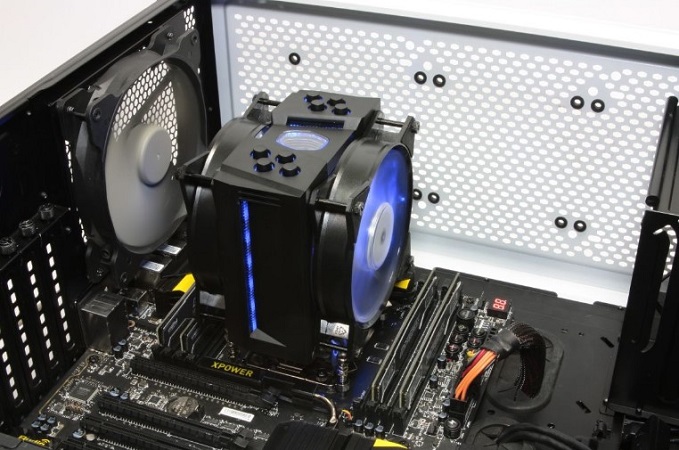Choosing the best video editing computer can be hectic because you have to balance your needs and budget. You need to consider the power and speed of the computer to maintain your workflow while editing videos. Work with video editing software requires a high-performing PC that will tailor all your needs.
So what will be the best video editing desktop configuration to perform a smooth workflow? You will need to consider many things, including your editing type and the software you will use. The minimum requirement is Windows 7, 8, or 10, Linux, Intel Core i7 2.3Ghz Quadcore, or AMD Ryzen 5. You will also need at least 8 GB RAM and 500GB HDD storage space. In this context, we will talk more about choosing the perfect desktop configuration for video editing.
What Is Desktop Configuration?
The easy way to explain desktop configuration is an arrangement of desktops for each functional unit. The configuration system presents the way it is set up, related to the assortment of system building components. According to Wikipedia, it refers to a piece of hardware, software, and it can be a combination of both of them.

A desktop configuration also refers to a desktop’s firmware, documentation power system, and many other components too. The configuration cores or power system will ensure smooth video editing workflow, which is related to both performance and function. Here are the main aspects of any desktop configuration system.
- Processor (CPU)
- Operating System
- Memory
- Storage
- Monitor/Display
- Network Adapter
What Specs Are Important For Video Editing Desktop Configuration?
Most video editors are often confused about what desktop specs will be good for performing video editing. Here we will explain what species are important for video editing desktop configuration.

1. Motherboard
Motherboard is the central or component that connects everything. If you decide to build your own desktop, choose a motherboard equipped with everything and will support other components. You need to choose a motherboard with a compatible socket, which will perfectly support chipsets.
Motherboard’s specs will not affect the desktop’s performance as long as it perfectly works with CPU, SSD, RAM, and other components. However, while choosing a motherboard you have to consider the number of supported USB ports, onboard sound, and hard drives. Choose a CPU with a lot of external ports, which have faster and latest ports.
2. CPU
Having a quality CPU is really important because it is the brain of every computer system. A good CPU or processor will let you perform video editing without fencing annoying lags. The CPU chip has a lot of cores with which it processes instructions. The speed of CPU measured in GHz (gigahertz) and more cores will provide faster processing.
Intel Core processor can be a good choice and the 10th-generation Intel Core processor will give you advanced video performance. Intel Core i7 processor provides and Intel Core i5 processor offers faster and smooth performance. The processor’s power will determine how smoothly you can accomplish your editing tasks.
3. GPU
Along with looking at many parts on desktop specs, you also have to look at the graphic card. It affects editing performance including volumetric color, blending modem cross dissolve, fast blur, playback, and many more. Perfect use of graphic cards can boost up your video editing procedure.

Quality graphic cards can perfectly process all video editing-related tasks, including processing images and creating proxy files. Graphic card-accelerated processing means it will render your videos faster than you create your final file. It will give you more space or room because the GPU has its own RAM system. So choosing 4 GB or more graphics cards will be good for you.
4. RAM
Having enough RAM is really essential when it’s about to edit videos on the desktop. If you want to edit the video at 1080p your PC must have at least 8 GB RAM. For 4K 16 GB RAM will be the absolute minimum. You need to choose the RAM based on your footage resolution.
Most of the video editing apps require lots of RAM, so investing in good RAM size is necessary. To get a good workflow while editing videos, you just need to aim for a minimum of 32 GB of RAM. Using higher RAM than this will be obviously a better choice if you afford it.
5. Storage
Another essential thing you need to consider building a desktop for editing is the hard drive or storage system. Because not most people use external hard drives, therefore you have to use a proper storage system on your desktop. Using a 516GB SSD can be good enough for gaming proper video editing performance.
However, you can also go for M.2, because it offers much better performance while editing videos. Editing modern resolution types of video on the desktop can consume a lot of data on your desktop. So it will be a good option to spend much to ensure speedy workflow.
6. PSU
When it’s about a video editing desktop, you have to ensure a high-quality power supply. Lack of power supply can cause you an unexpected failure. We will offer an 80+ rating of Bronze or better, which will ensure that your PC uses power more efficiently. Moreover, the 80+ rating of Bronze will run cooler and quieter. Since it’s difficult to recognize the high-quality PSU, take recommendations from your trusted source.

7. Case
Cases come in different sizes, shapes, colors and most of them come with a block tower and glass side panel. Each case supports different cutouts, fans, and drive bays vary. However, you have to use a quality video editing desk to place your case and every necessary tool. Try to buy a spacious case with good airflow and room for future up-gradation.
8. CPU Cooling Options
You may know video editing is a CPU-intensive task that takes many resources. When you perform any heavy task then your desktop will output more heat. CPU cooling fans are very much affordable and also easy to install. Once you have installed the CPU cooling fans, that will require no maintenance.

9. Resolution
Resolution is one of the facts that require the right choice. You need to pick a monitor that supports 4K or Ultra-High resolution. Selecting the right quality monitor will give your editing videos an amazing look. You need to pick a monitor with a resolution of 3,840 by 2,160 pixels. It will enhance the image quality of your video and make your videos stand out.
Conclusion
We hope our guidelines will help you know about video editing desktop configuration and pick the best video editing computer. Many people may suggest using a laptop for video editing with health laptop RAM. However, laptops with plenty of RAM will not give you a smooth workflow like the desktop.
Speed, clock speed, storage space, processing power, video cards, and prices are the things that you need to look at. You have to make sure that whichever or whatever you choose perfectly meets the needs that matter most. Now, you know what you should choose for PC for video editing and what will be the best for you.

